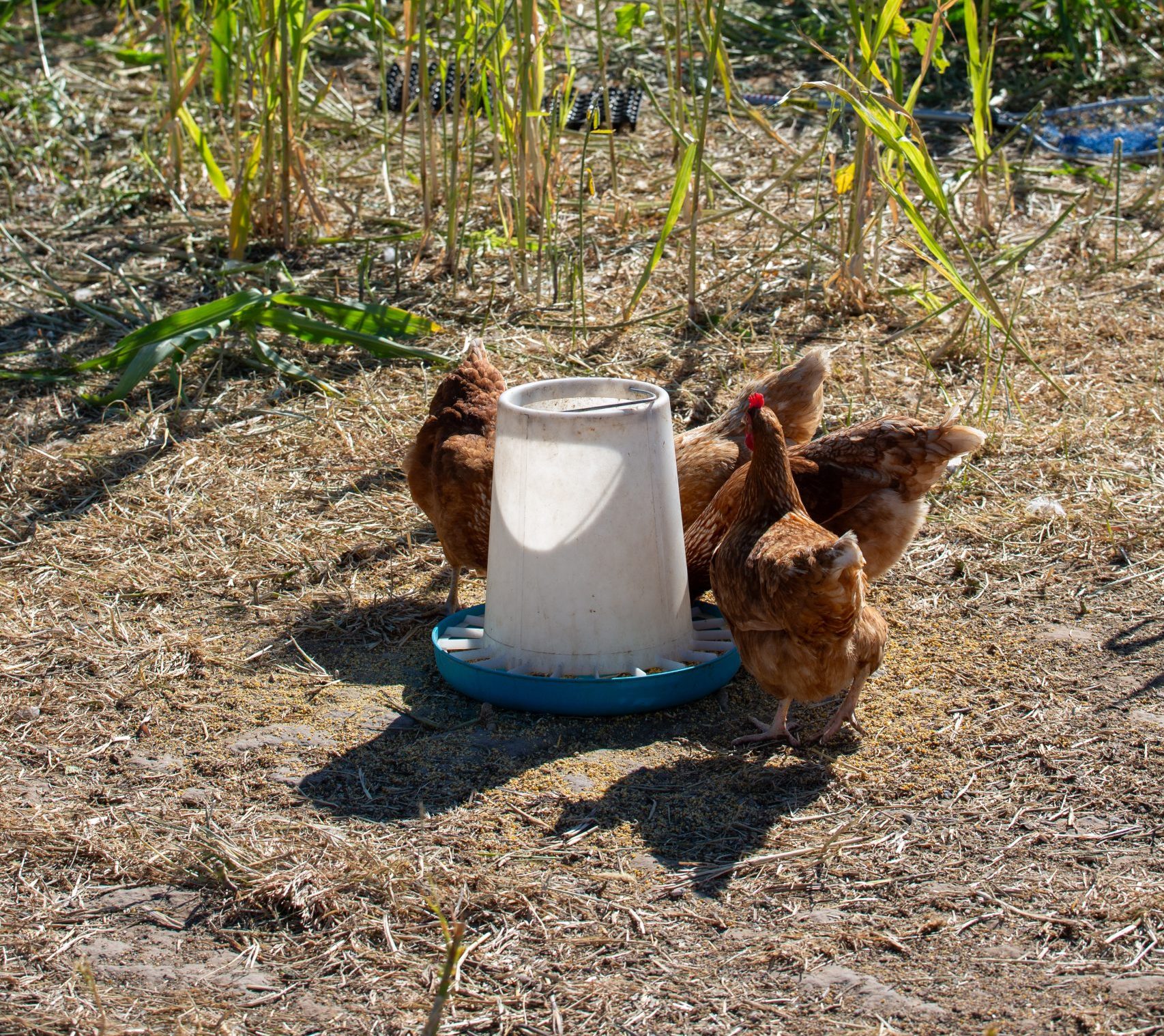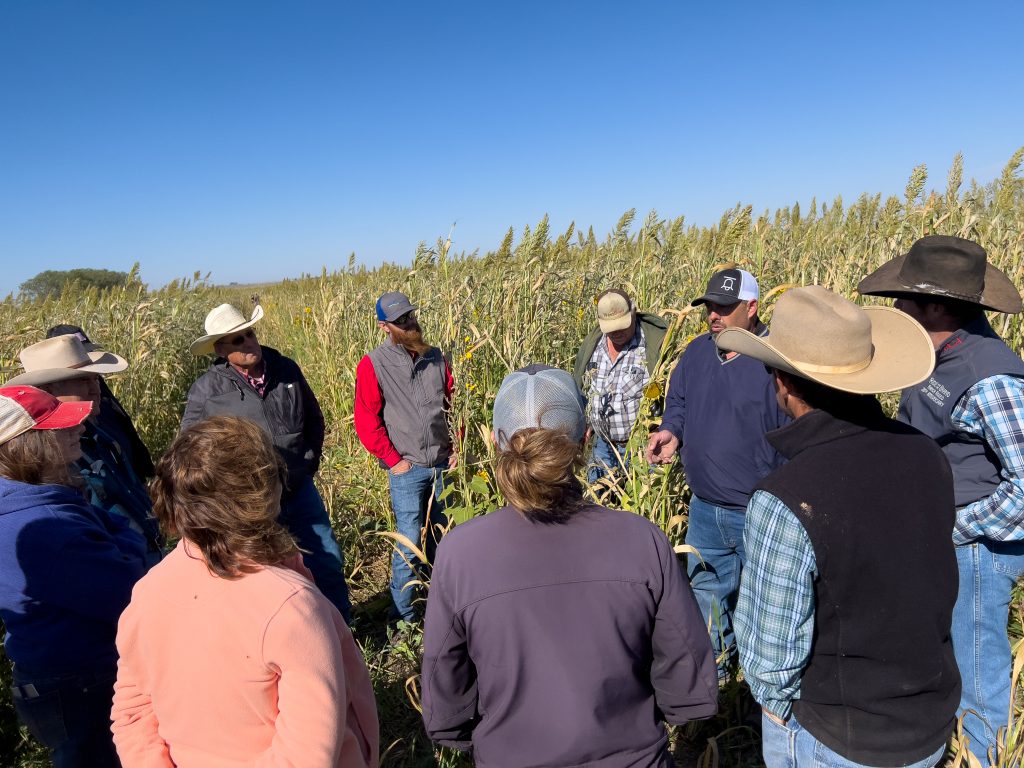NTOP field day showcases benefits of soil health practices

Lance Fiekert’s farm is a little different than most out in western Kansas. There are 350 chickens roaming around one of his irrigated circles. Other times of the year there will be cattle grazing. Sometimes there’ll be a conventional sorghum crop, corn or cover crops on those acres.

Fiekert told attendees at the recent No-Till on the Plains field day that in the time he’s owned this particular circle, he is just now beginning to see an improvement in the soil. In addition to the added soil education, he’s also been learning how to run cattle on his cover crops and milo stalks and has been learning the ins and outs of grazing from Protection, Kansas, rancher Mark Lohrding.
“We’ve seen some pretty good things by moving cattle (through the circle), but also just having cattle out on milo stalks, on our next year’s crops and I’m seeing that just now as we just start cutting milo,” Fiekert said. “I’m seeing a few things that are making me glad that he’s been bringing cattle up.”
He said there’s benefits to be seen on the back end.
“I’ve been in no-till for 15 years and everybody says this don’t work,” he said in disagreeing with that assessment. “I’m starting to see it.”


During the field day, the irrigated circle Fiekert showed with his cover crop had a diverse mix that includes sorghum, sudan, sunflower, sun hemp, and volunteer oats. He planted it July 29 and through irrigation it had received about 5 inches of water. He expects the leftover nitrogen to help in the future.
“The sunhemp leaves some residue,” he said. “The rapeseed is dual-purpose. Cattle eat the leaves, and next spring flowers will feed honeybees. We see a lot of regrowth.”
He plans on spraying the field if he does decide to go back into corn, as the rapeseed and buckwheat can be a little concerning.
“I won’t plant milo out here,” he said. “It’ll be a big mess. The shattercane will ruin it.”
Grazing
During the last couple years, they’ve been strip grazing the cover crops, and eventually make their way through the circle.


“The cattle eat what they like best first,” Lohrding said. “As go through the winter, they move through it.”
Diversity in the field eases any nitrate concerns with the cattle.
“Diversity causes less stress,” he said.
According to Fiekert, the polywire they use to keep the cattle contained works well for them, and the cattle move easily when it’s time to move the fencing. But he still remains most impressed with the benefits to the soil the cattle bring.
“Where we let the cattle graze for 100 days, it made 60 to 80 bushels,” he said.
Lohrding praises Fiekert’s commitment and expertise.



“The cattle helped,” he said. “Lance is a good farmer.”
The cattle gained about one body condition score, according to Lohrding. In the time he’s been grazing at Fiekert’s they’ve only lost one. For the pair, it just makes sense.
Sign up for HPJ Insights
Our weekly newsletter delivers the latest news straight to your inbox including breaking news, our exclusive columns and much more.
“Soil health is tied to finances. If it doesn’t make sense financially, you can’t do it,” Lohrding said. “It’s good for all of it.”
Kylene Scott can be reached at 620-227-1804 or [email protected].



